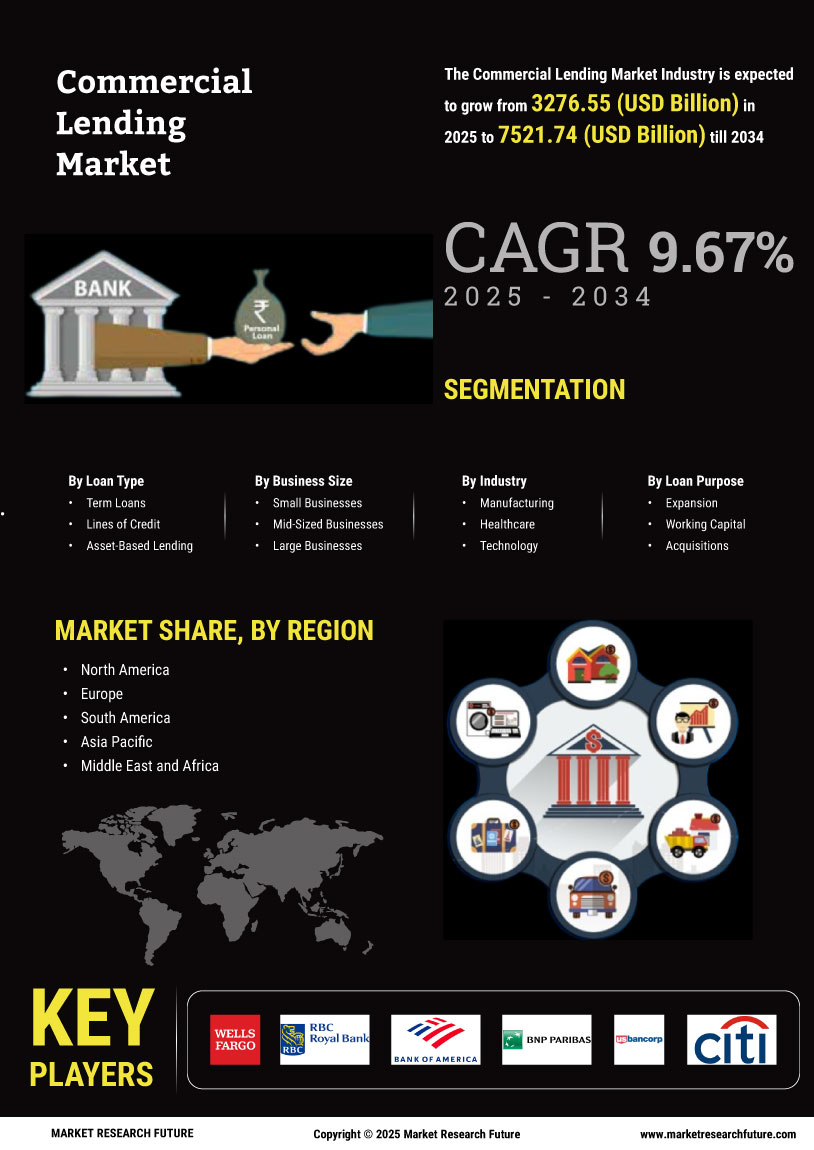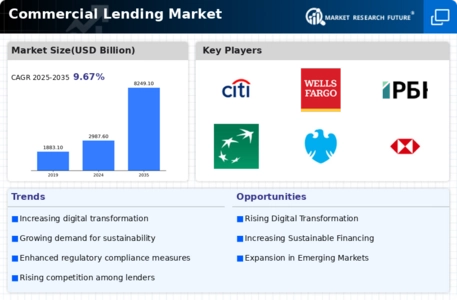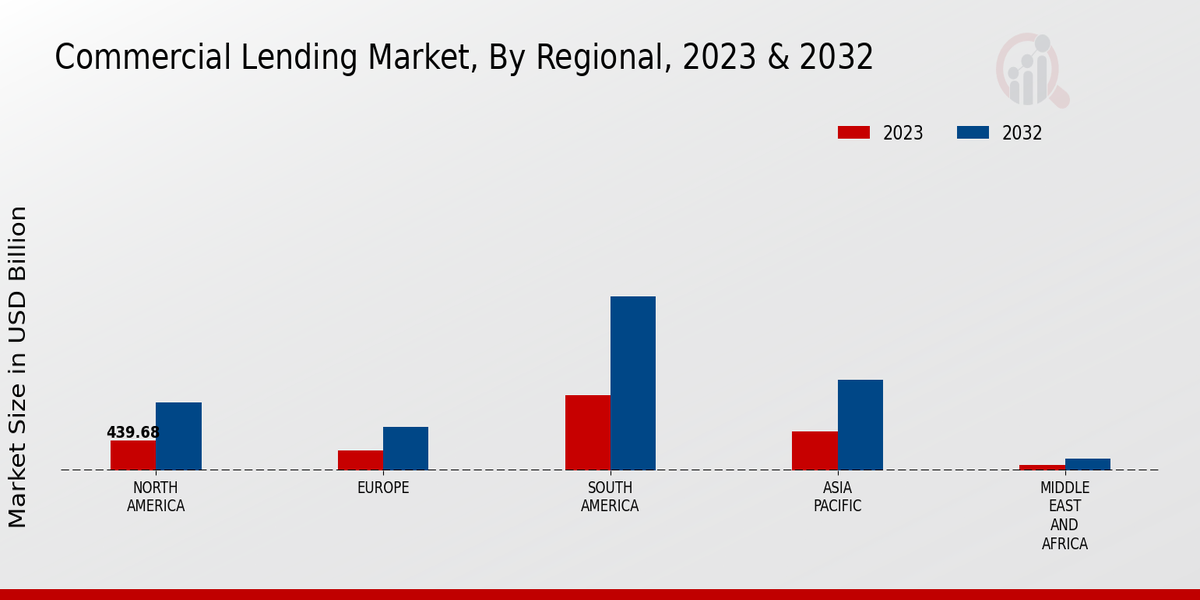Market Growth Projections
The Global Commercial Lending Market Industry is projected to experience substantial growth, with estimates indicating a compound annual growth rate (CAGR) of 9.67% from 2025 to 2035. This growth trajectory reflects the increasing reliance on commercial loans by businesses across various sectors. The market's expansion is expected to be driven by factors such as rising demand for financing, technological advancements, and supportive regulatory frameworks. As the industry evolves, it is anticipated that lenders will continue to innovate their offerings, catering to the diverse needs of borrowers. This dynamic growth presents opportunities for stakeholders to capitalize on emerging trends and enhance their market positions.
Increased Competition Among Lenders
The Global Commercial Lending Market Industry is characterized by heightened competition among lenders, which drives innovation and improves service offerings. As more financial institutions enter the market, they are compelled to differentiate themselves through competitive interest rates, flexible terms, and enhanced customer service. This competitive landscape not only benefits borrowers but also encourages lenders to adopt more efficient practices and technologies. The ongoing rivalry among lenders may lead to a more dynamic market environment, fostering a culture of continuous improvement and adaptation. As a result, the industry is likely to witness a shift towards more customer-centric lending solutions.
Rising Demand for Business Financing
The Global Commercial Lending Market Industry experiences a notable surge in demand for business financing, driven by the increasing number of small and medium-sized enterprises (SMEs) seeking capital for expansion. In 2024, the market is valued at approximately 2987.6 USD Billion, reflecting a robust appetite for loans among businesses aiming to enhance operational capabilities. This trend is likely to continue as SMEs contribute significantly to job creation and economic growth, prompting lenders to tailor their offerings to meet diverse financing needs. Consequently, the industry is poised for substantial growth, as businesses increasingly rely on loans to fuel their ambitions.
Economic Growth and Business Expansion
The Global Commercial Lending Market Industry is closely tied to economic growth, as businesses seek financing to capitalize on emerging opportunities. As economies expand, companies are more likely to invest in new projects, equipment, and workforce development, necessitating access to capital. The projected growth of the market to 8249.1 USD Billion by 2035 underscores the correlation between economic performance and lending activities. This upward trajectory suggests that as global economies recover and flourish, the demand for commercial loans will likely increase, providing lenders with a fertile ground for growth and innovation in their offerings.
Regulatory Support for Lending Activities
Regulatory frameworks significantly influence the Global Commercial Lending Market Industry, as governments worldwide implement policies to encourage lending activities. Initiatives aimed at promoting financial inclusion and supporting SMEs have led to favorable lending conditions. For example, certain jurisdictions offer guarantees or subsidies to lenders, reducing the risk associated with lending to smaller businesses. This regulatory support is expected to bolster the market, as it creates a conducive environment for lending. As the industry evolves, ongoing collaboration between regulators and financial institutions may further enhance access to credit, ultimately driving growth in the commercial lending sector.
Technological Advancements in Lending Processes
Technological innovations play a pivotal role in shaping the Global Commercial Lending Market Industry, as lenders adopt advanced digital platforms to streamline lending processes. Automation and artificial intelligence enhance efficiency, reduce processing times, and improve customer experiences. For instance, the integration of machine learning algorithms allows lenders to assess creditworthiness more accurately, mitigating risks associated with lending. As these technologies become more prevalent, they are expected to attract a broader range of borrowers, thereby expanding the market. The ongoing digital transformation suggests that the industry will continue to evolve, adapting to the changing preferences of both lenders and borrowers.













